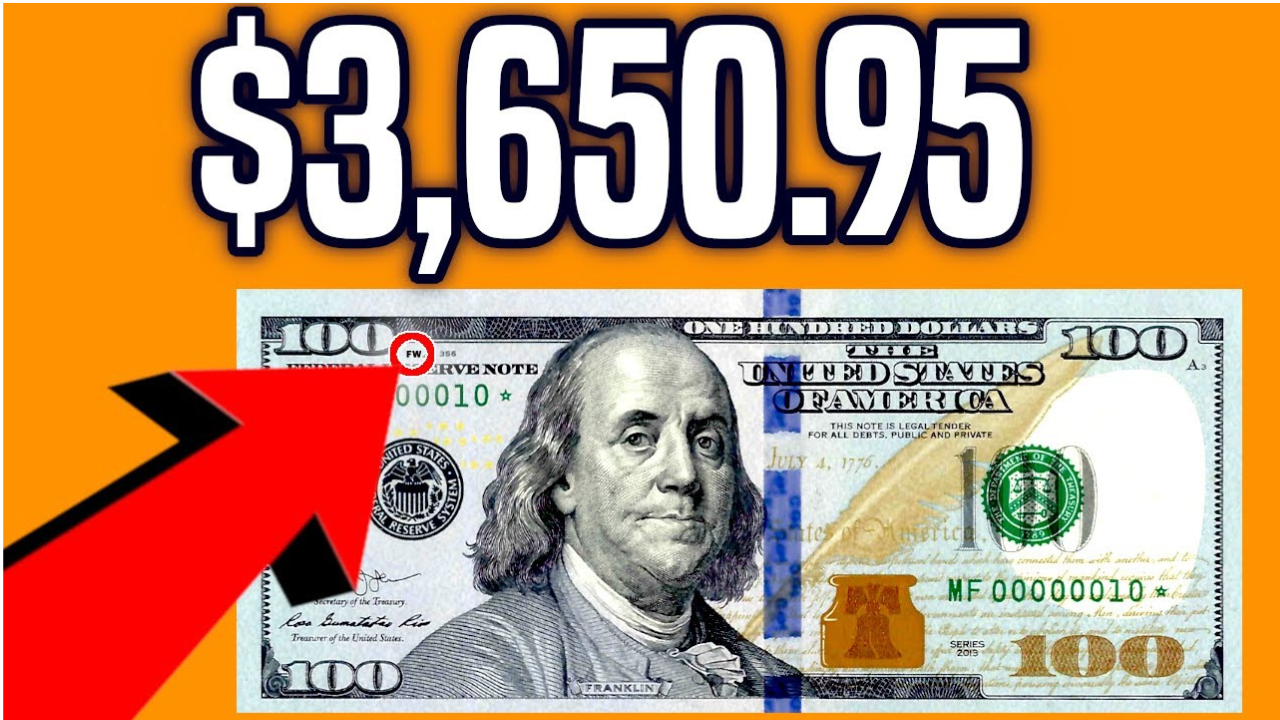2013 $100 Bill:If you have a 2013 $100 note hidden in your wallet or drawer, don’t be so quick to spend it. Some rare versions of this note are worth thousands of dollars to collectors.
The reason? Special printing errors, low serial numbers or unique design features can turn an ordinary-looking note into a rare and valuable collectible.
In this article, we’ll tell you how to identify these rare 2013 $100 notes, why collectors are looking for them, and how much your note could be worth.
Why is The 2013 100 Dollar Note Special?
The 2013 series of the $100 note introduced improved security features and a sleek new design, making it more difficult to counterfeit. It features:
- Blue 3D security ribbon
- Color changing bell inside inkwell
- Large gold “100” printed vertically on back
But beyond these features, some of the 2013 notes became unintentionally rare due to printing errors and limited printing on specific features.
Printing error: ‘Mule’ Notes from Fort Worth and Washington, D.C.
One of the most valuable types of 2013 $100 note stems from an unusual printing error: mule notes.
These notes were printed at two different facilities – Fort Worth, Texas and Washington, D.C. In a strange lapse, both facilities printed overlapping serial number ranges, making it possible to obtain duplicate serial numbers from two different locations.
This type of mismatch is extremely rare in modern currency and has drawn increased interest from currency collectors.
Key Features That Make Your 2013 $100 Bill Valuable
To determine if your 2013 $100 bill is worth more than face value, check the following:
| Feature | Why It’s Valuable | What to Look For |
|---|---|---|
| Duplicate Serial Numbers | These are printing anomalies due to the two-facility error | Serial number matching another 2013 bill from a different facility |
| Low Serial Numbers | Notes with numbers like “00000001” to “00000100” are highly prized | Any bill with multiple leading zeroes |
| Star Notes | Printed to replace defective bills — generally rarer | A star “★” at the end of the serial number |
| High-Grade Condition | Bills graded 65+ by PMG or PCGS fetch higher prices | Crisp, uncirculated condition with no folds or marks |
| Serial Number Prefix | Some prefixes like “ML” or “LF” may hold more collector value | Check the first two letters of the serial number |
How much could it cost?
Depending on rarity and condition, some 2013 $100 notes have sold for thousands at auction.
- A bill with a duplicate serial number can sell for $2,000-$4,500.
- A bill with a low serial number can sell for $800-$3,000.
- A Star Note that is spotlessly clean can sell for $500-$1,200.
- Obsolete notes with rare prefixes can sell for $200+.
How to identify a Printing Facility
To find out if your bill was printed in Fort Worth (FW) or Washington, D.C., look at the small lettering near the face plate number.
- If the letters “FW” appear before the face plate number, it is printed in Fort Worth.
- If there is no prefix, it is from Washington, D.C.
Of particular interest to collectors are bills from duplicate serial number batches, which include notes printed on both features with overlapping numbers.
Tips for Selling or Getting an Appraisal
If you suspect that your 2013 $100 note might be valuable:
- Don’t spend or bend it. Keep it in a protective wrapper.
- Use online auction records to see if similar serial numbers have been sold.
- Contact a professional currency grading service such as PCGS Currency or PMG to get an official appraisal.
- Join currency forums or collector groups to get free information.
That $100 bill from 2013 in your wallet might be worth a lot more than $100. Whether it has a duplicate serial number, a star on it, or is in mint condition, it could be your key to a small windfall.
With collectors clamouring to find these rare notes, now is the perfect time to check your cash stash and see if you’re unknowingly holding onto a valuable piece of modern currency history.
Frequently Asked Questions
Q: Which is the most valuable version of the 2013 $100 note?
Notes with duplicate serial numbers printed at both the Fort Worth and Washington, D.C. facilities are the most valuable, worth more than $4,000 in some cases.
Q; How do I know if my 2013 $100 note is a Star Note?
Look at the end of the serial number. If there is a star symbol (★) instead of a letter, it is a Star Note.
Q; Where can I sell my rare $100 note?
You can sell it through online auction sites, certified currency dealers or have it graded and listed at professional currency marketplaces.





